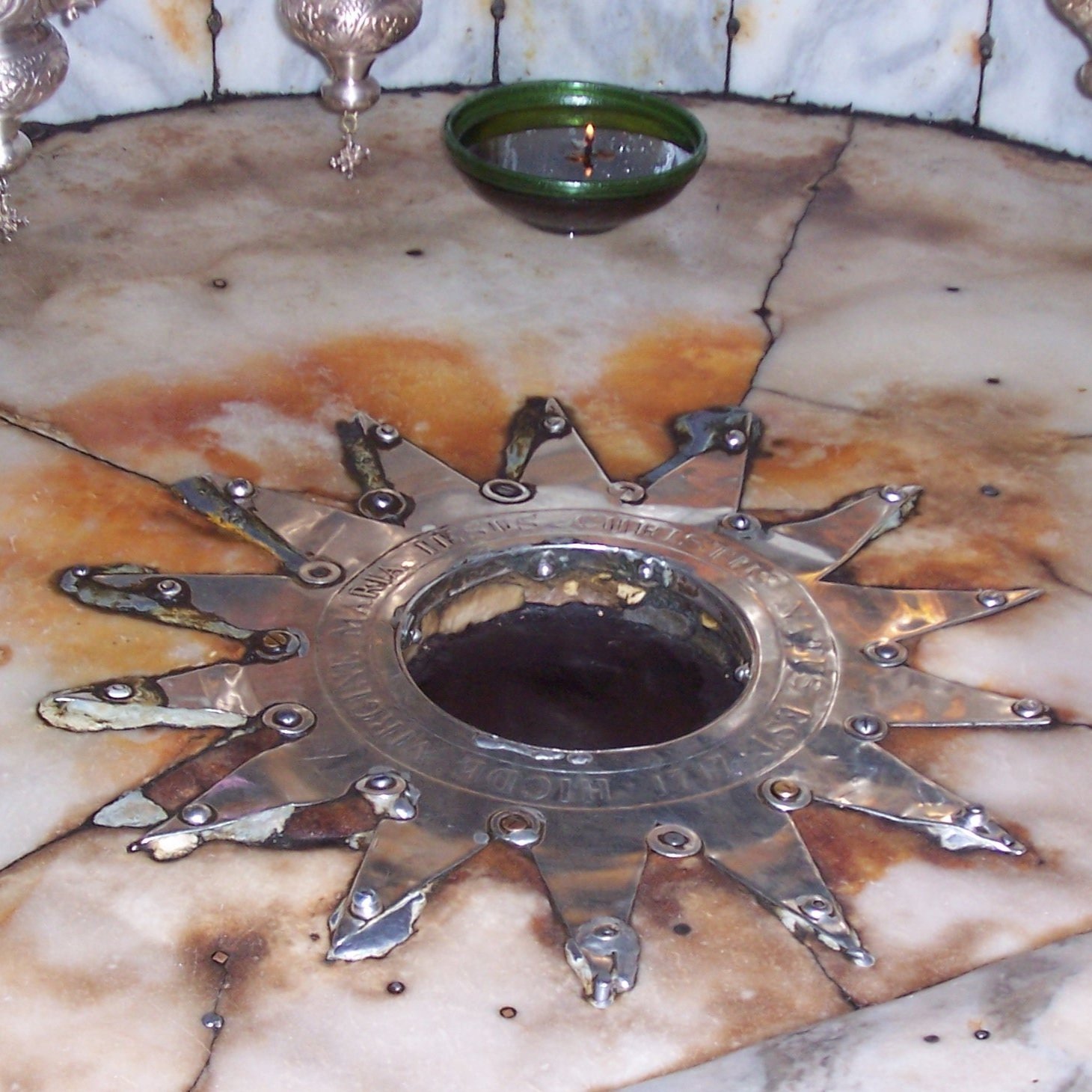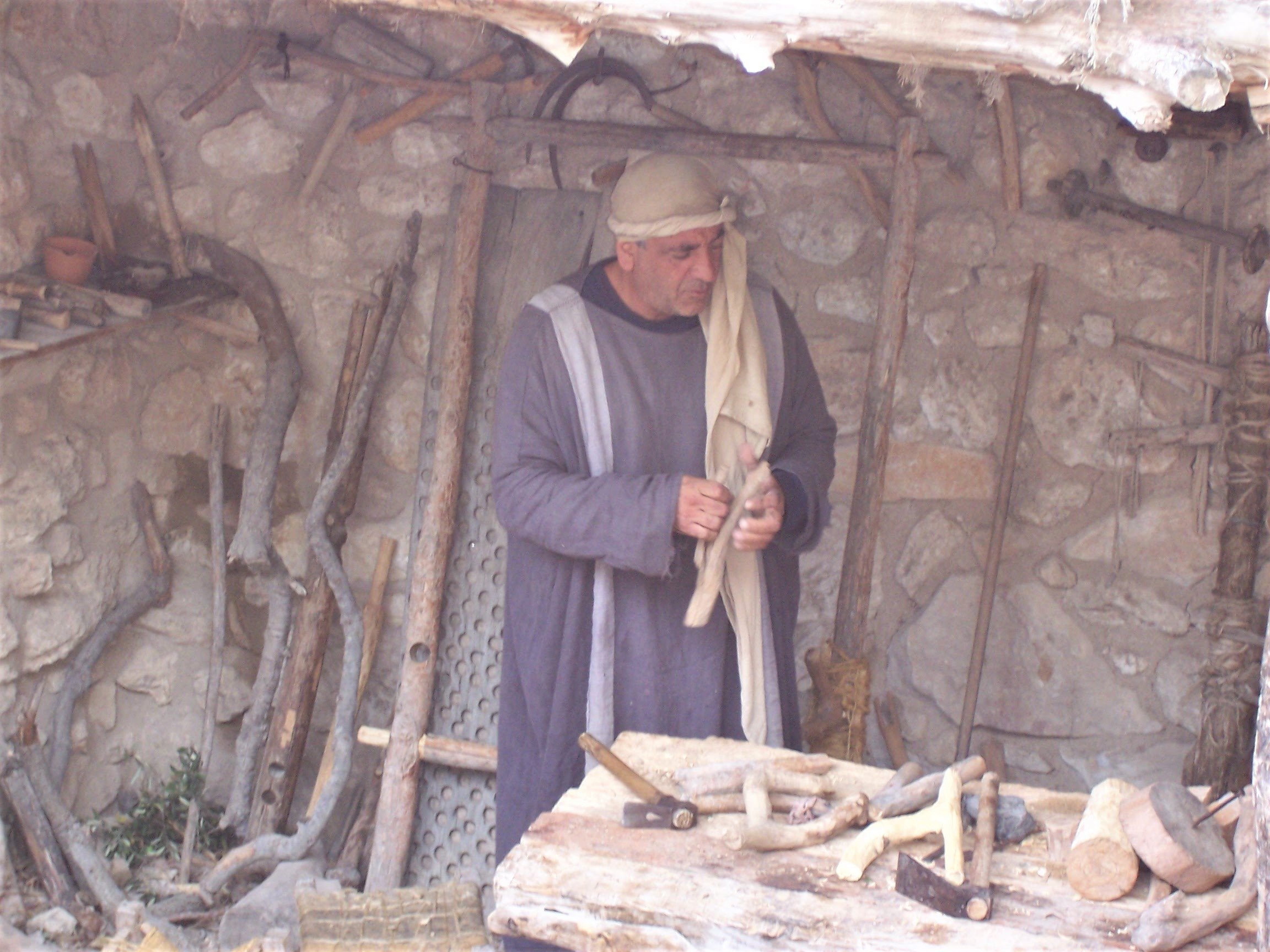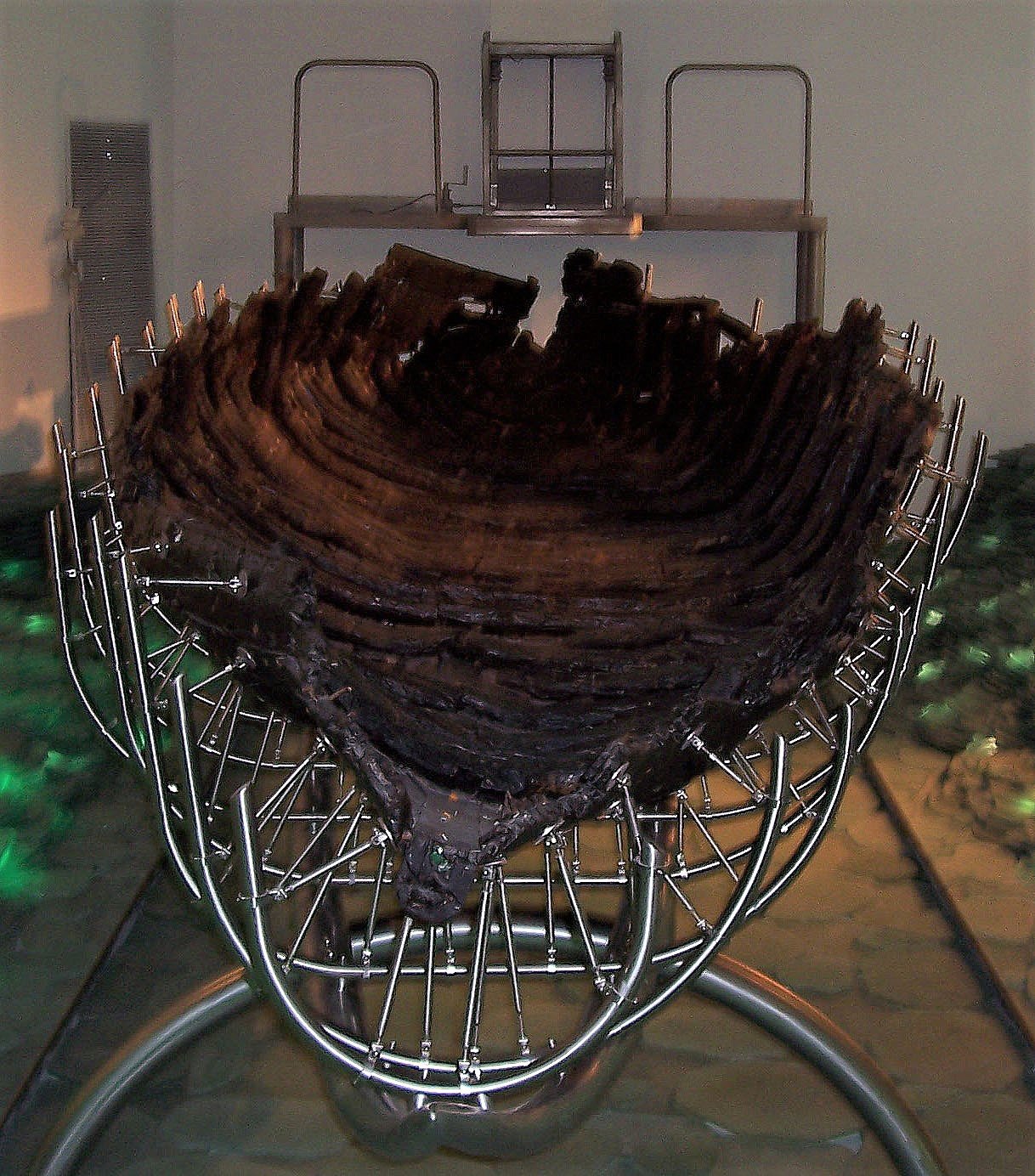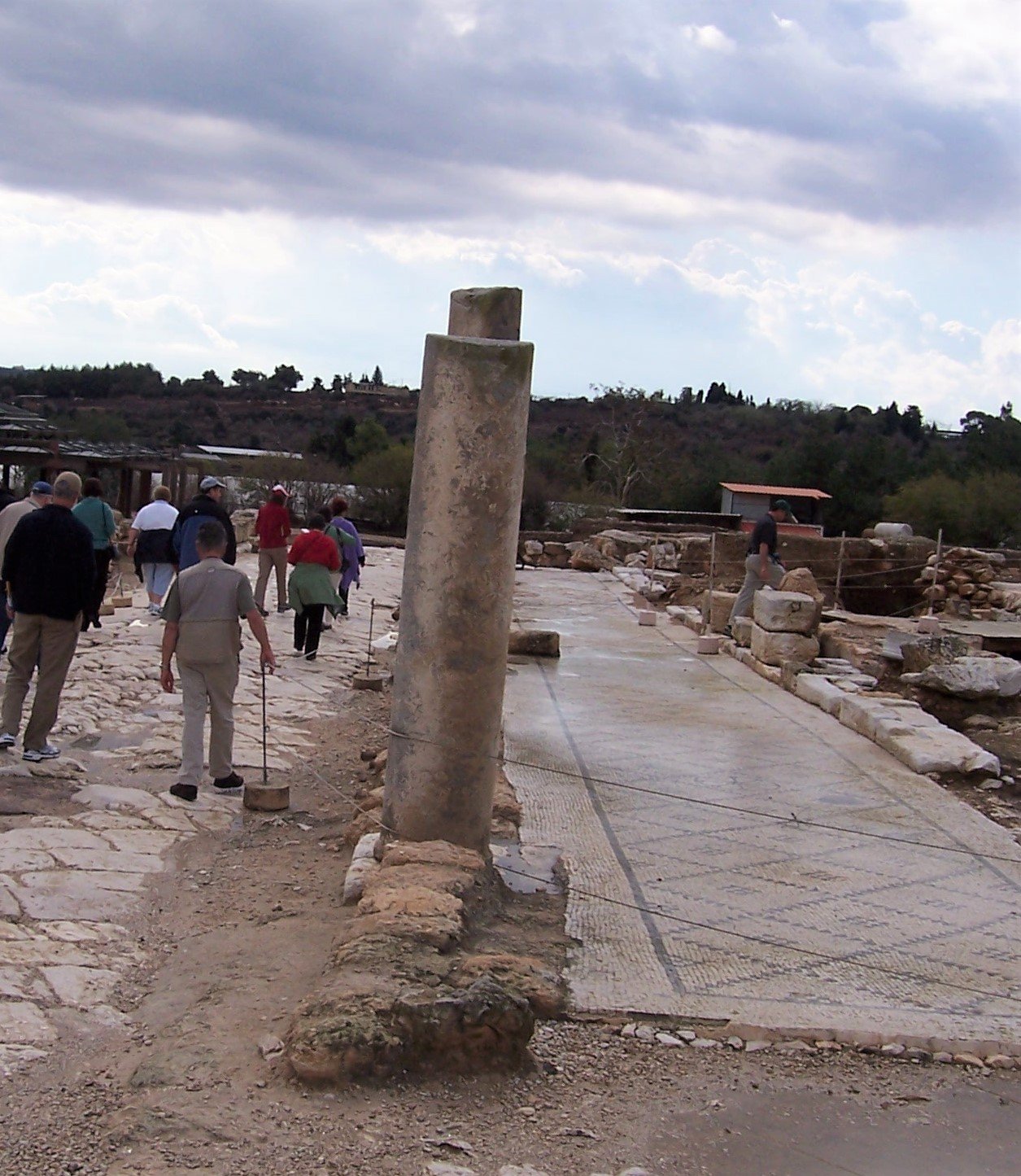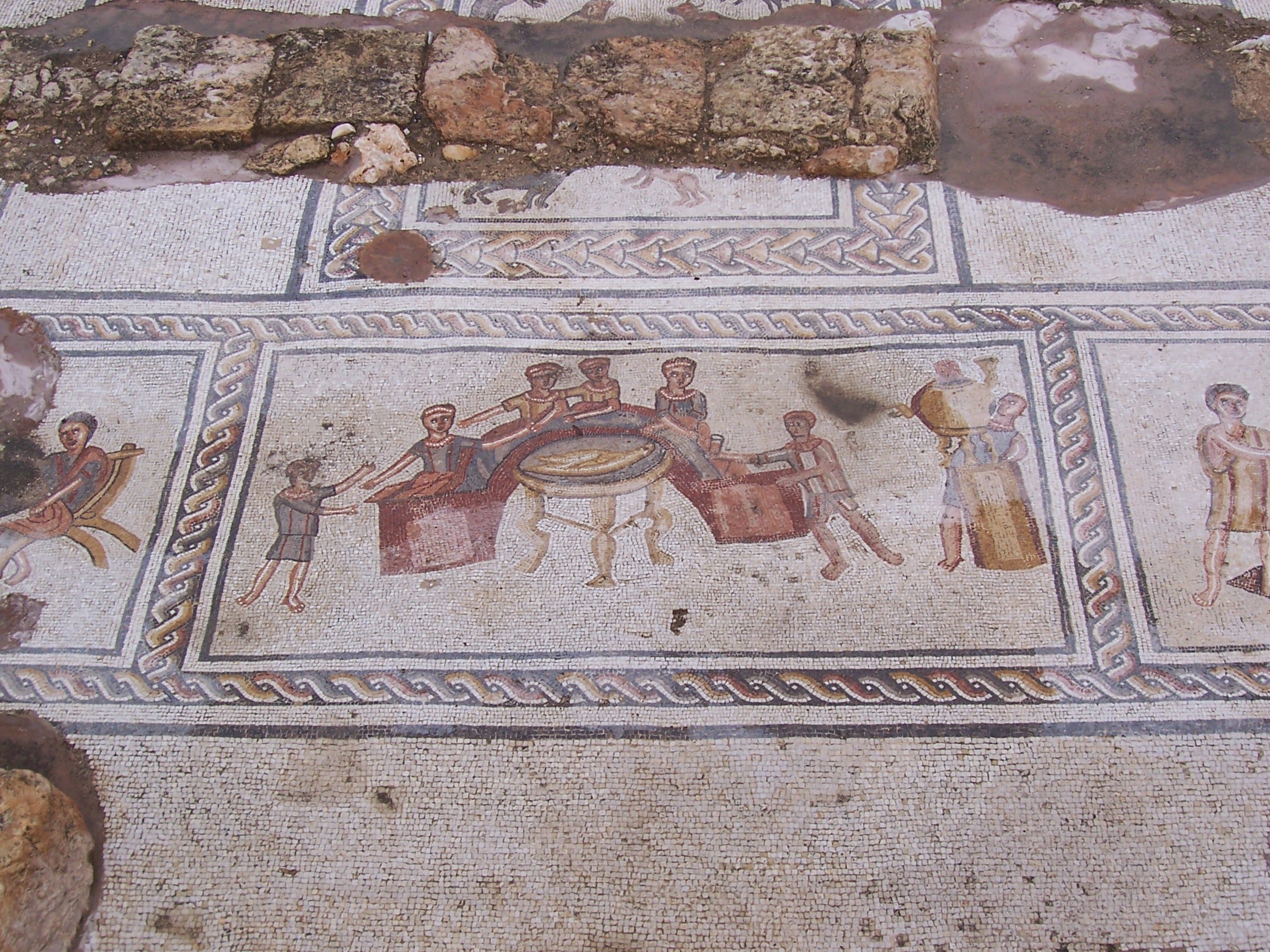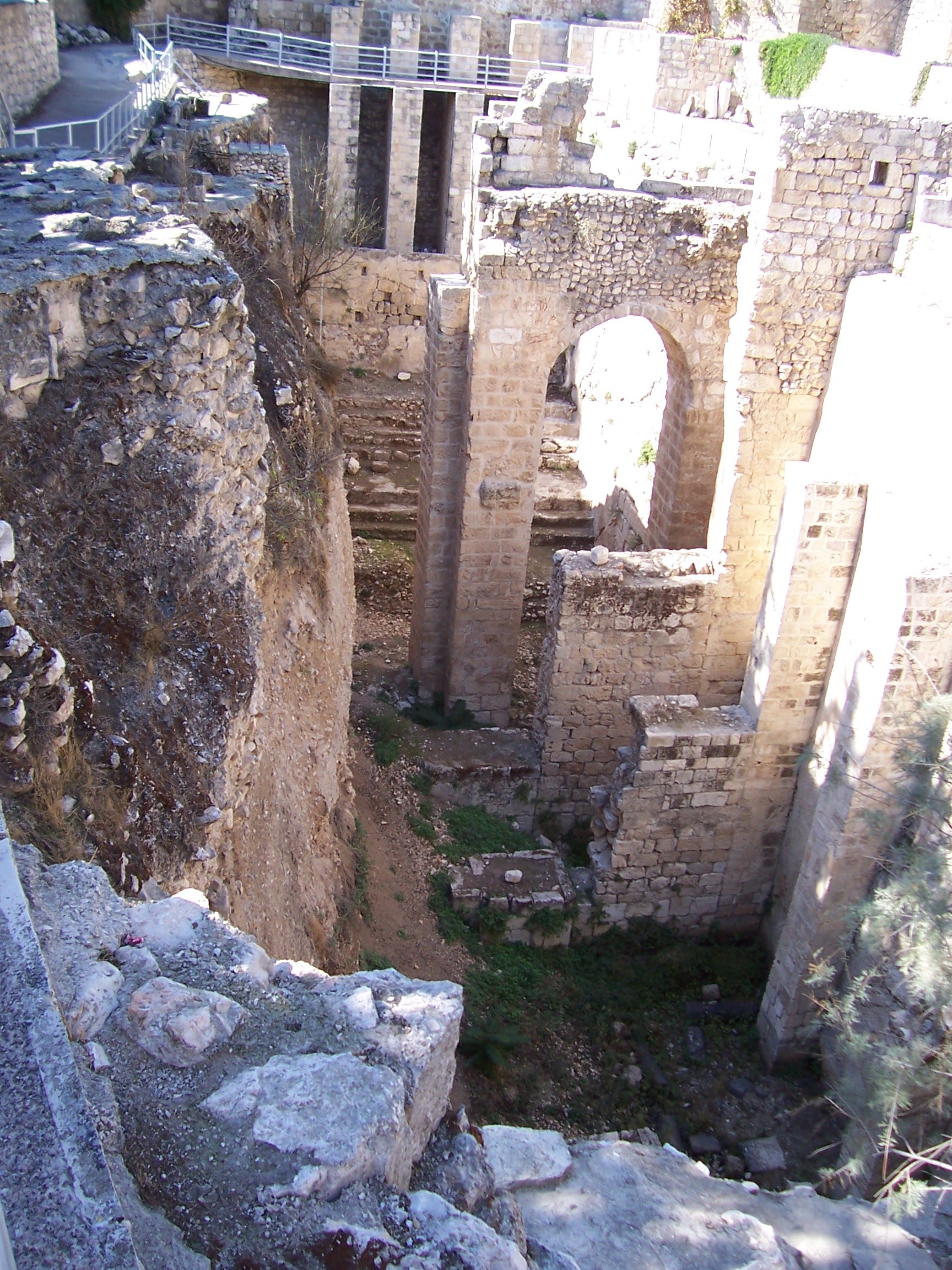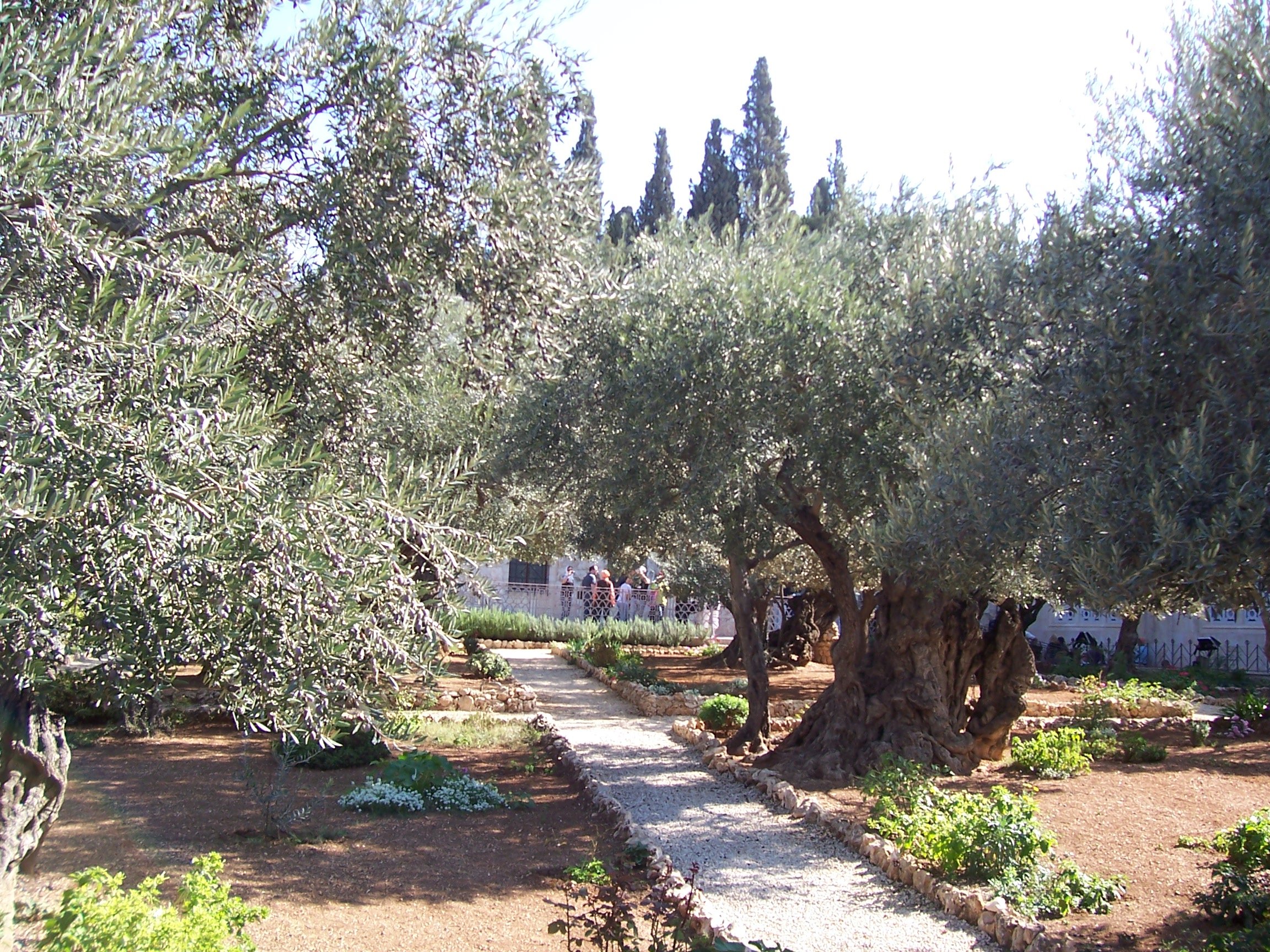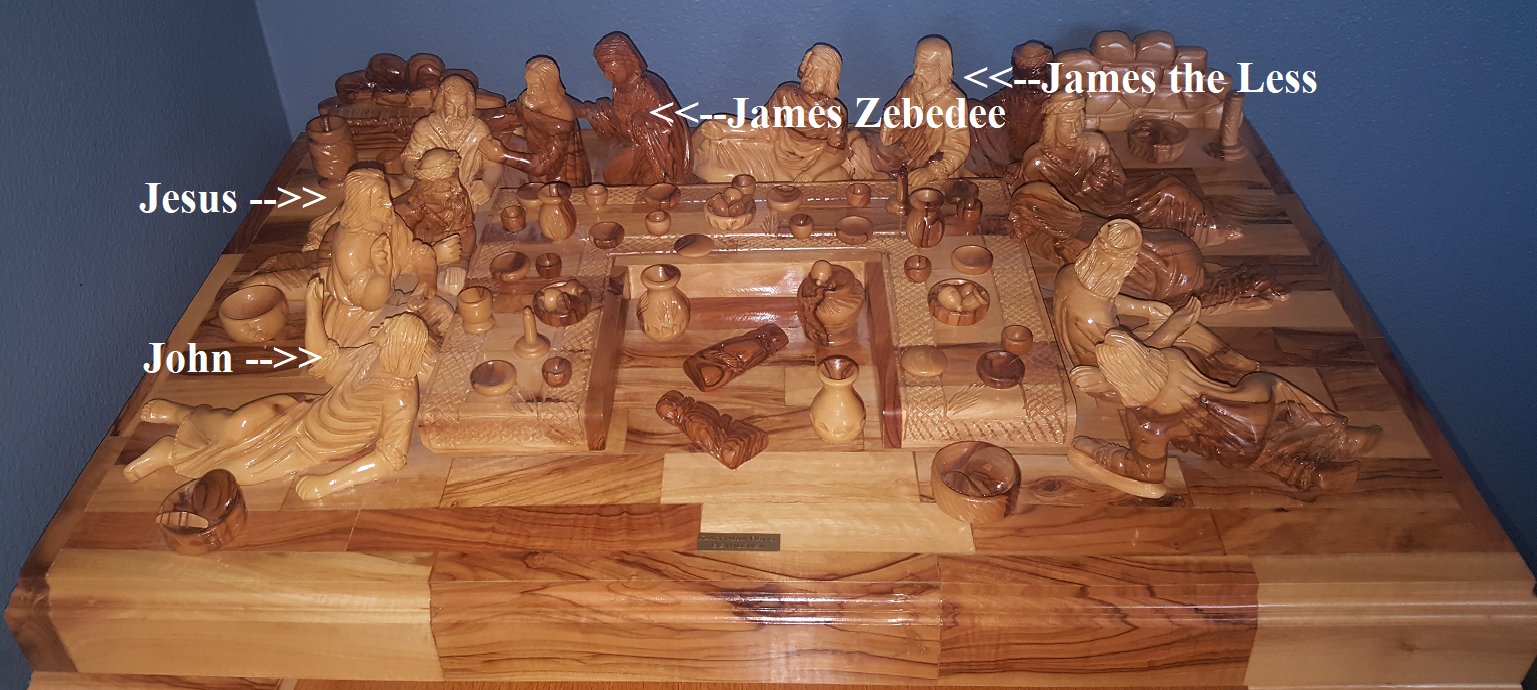ALL IN THE FAMILY
Just over two millennia ago, human history was forever altered with the birth of a baby — both human and divine — in an animal stable of a an ancestral community known as Bethlehem. Both for Jesus the Christ and his ancestral predecessor, King David, this little town of Bethlehem would serve as the birthplace of individuals and ideas that would change the world.
Pictured above and to the left, this mosaic of the virgin Mary is in Nazareth’s Church of the Annunciation, commemorating the place where the angel Gabriel visited Mary and delivered the invitation for her to bear God's Son. To the right is the silver star marking the place where Jesus is believed to have been born — located in Bethlehem’s Basilica of the Nativity — and reputed as the oldest site continuously used as a place of worship in Christianity.
This Christmas season represents the time to remember and celebrate the birth of Jesus — but perhaps in a way that is different from the norm. Rather than focus in only on Jesus as baby, the goal of this essay is to widen the lens to encompass the communities into which Jesus was placed as child and adult to live and minister — both by way of geography and familial connections. And to examine what that means for those who express Christian faith and practice.
As expressed in the Hebrew scriptures (or Old Testament), the divine being of God (or Yahweh) values both place and people. He made a covenant at the inaugural of a great nation with a patriarch called Abraham. And this divinity identified a place called Israel (meaning struggle with God) where that covenant could be both tested and realized.
With attributes of humanity and divinity, the boy and then adult Jesus would navigate in and through this place of the Galilee and within a family that proves instrumental in the accomplishment of his earthly mission. Using scripture coupled with other documented sources, this essay is intended to detail those often overlooked connections of place and family. And then to conclude with observations as to relevance for this and future Christmas seasons.
If there is a message to take from this bit of history, it is that Jesus did not appear on and travel this planet as deus ex nihilo (God out of nothing). Rather, he came into a specific place and as a member of a specific family that both facilitated and shaped his earthly sojourn:
The divine enterprise was more than a solitary endeavor — it involved an extended family of earthly blood relatives — playing key roles to introduce and help build the kingdom of God here on this planet.
The kingdom was planted and first took root in an unlikely but divinely appointed place — spreading out from the reclaimed and repopulated land of the Galilee to encompass Judea, Samaria and eventually the uttermost parts of the earth.
And now for the story of how all this came about.
Beware, this story unfolds like a meandering journey. But as no one less than Steve Jobs has said, “the journey is the reward.”
Story of the Galilee
Jesus was born in Bethlehem, the ancestral Judean homeland of his forebear, King David. But he would spend most of his growing up years — indeed most of his life — not in Bethlehem but in a community called Nazareth to the north — in a region at the hinterlands of Israel known as the Galilee. And here’s where this recounting begins.
The story of re-populating and rebuilding the Galilee is nothing new. This is a story common to communities and civilizations globally. And for Jesus, it is the story of a land with mixed and often changing identity.
For the Galilee, a recent and well documents chain of events occurred in the years leading up to the creation of Israel, recognized as a nation-state by the United Nations in 1948. However, this story extends back millennia earlier with Babylonian King Nebuchadnezzar besieging the city of Jerusalem and taking captives starting in 606 BC. An estimated 70 years after the city’s destruction, a new king running a new empire – Cyrus the Great of Persia – allowed exiled Jews to return to Jerusalem and rebuild their temple.
But this renewed independence didn’t last. In 322 BC, Jerusalem surrendered to the Greek conqueror Alexander the Great. After Alexander, Judea comes under the control of Egypt.
Egypt and then Syria rule for about 150 years. And then the Jewish Maccabees revolt against foreign rulers in 167 BC. Jewish freedom lasts off- and on- for just over 100 years until Jerusalem is conquered for Rome in 63 BC. And about two decades later, in 40 BC the Roman senate appoints the man who would become known as Herod the Great as their client king.
And where did Herod the Great get his start in politics? Well, it occurred when he was first appointed by his father as governor of Galilee in 47 BC.
All this is a long way around to asking a question: what was going on in Galilee all this time? Well, it would appear that the Galilee was largely depopulated for generations from the time when Israel and then Judea fell to outside conquerors until after the Maccabees took back the land from all the foreign rulers.
In fact, looking years ahead of his time, the prophet Isaiah gives us a clue as to what was, in fact, going to happen. That the desolation of Galilee would be restored. Or as the passage we read in Isaiah 9 says:
In Galilee of the Gentiles.
The people who walked in darkness
Have seen a great light;
Those who dwelt in the land of the shadow of death,
Upon them a light has shined.
And later, the Jewish historian Josephus, who was born just after the earthly ministry of Jesus, gives us hints of the re-taking of Galilee – starting in about 110 BC, continuing until about 60 years before the birth of Jesus. The non-canonical book of I Maccabees (13:43-48) portrays an expansion into the Galilee by a Jewish community “who observed the law” as driving out the Gentiles.
By this time (just a generation before Jesus), Jerusalem and its Judean environs to the south had become overpopulated with young landless men. So, they were enlisted to resettle the conquered territories, notably the Galilee.
Much like Zionists who led the kibbutz movement and reclaimed the marshlands and the hill towns of the Galilee for Israel this last century leading to creation of the state of Israel, people like Joseph and Mary may have done much the same, resettling the Galilee with Jewish communities zealous for God just a bit over 2,000 years ago.
Recall now where Herod the Great got his start in politics. It happened when he was only about 25 years old. As the new governor of the Galilee, he needed a capitol, so he defeated a rival named Mattias Antigonus who abandoned a town called Sepphoris in a snowstorm. What’ important about Sepphoris? Well it becomes the capital of the Galilee and it’s only about four miles from an even smaller village called Nazareth.
So let’s fast forward. Herod is now a very paranoid old man. Jesus is born in the town of his ancestors – Bethlehem. Herod the Great is paranoid and murders the innocents in Bethlehem, Shortly thereafter, Herod dies.
After Joseph evacuated Bethlehem to Egypt to protect his family, when he returned it was to Galilee — out of reach of the Great’s replacement in his even more vile son — Herod Archelaus — who would be replaced by Rome after an interim 10-year rule over Bethlehem and Judea.
What was happening up north in Galilee? Well, the citizens of Sepphoris, which had been Herod’s first capitol, seized the opportunity to revolt against the Herodians and Rome in the wake of the Great’s painful and widely publicized death.
Sepphoris is destroyed in the revolt. Another of the Great’s sons — Antipas — becomes the new ruler of Galilee and would remain in that capacity for the rest of Jesus’ time on earth.
Antipas orders Sepphoris to be rebuilt as his showcase. At about this time, Joseph and his young family have returned from Egypt to rebuild a life in Nazareth. Virtually next door, Sepphoris would be rebuilt when Jesus was just a young boy. It wasn’t just any rebuilding – it was palatial. The 1st century Jewish historian Josephus would describe the rebuilt Sepphoris as the “ornament of the Galilee.”
And here’s where we jump from the features of place into some thoughts about the character of who Jesus was and is.
Was Jesus a Country Bumpkin?
This may come across as an unseemly question, but it seems to be a point of view shared both by evangelical Christians and theologians of more liberal persuasion.
The photo below and to the left offers one view of what the life of Joseph the carpenter may have been like, possibly working together together with his young son and helper Jesus. This is a re-enactment of the shop in present day Nazareth. Involving crude tools, poor materials and limited skills. All suggest an impoverished population – exploited by Roman oppressors and the Jewish elite.
The photo above and to the right provides an alternative view of craftsmanship at the time of Jesus. This is a fishing boat from the first century that was submerged in the Sea of Galilee for 2,000 years. It’s no crudely made vessel, but shows evidence of sophisticated manufacturing, joinery and waterproofing. The boat was constructed primarily of cedar planks joined together by pegged mortise and tenon joints and nails. It’s a boat that is shallow drafted with a flat bottom, allowing it to get very close to the shore while fishing.
At the time of Jesus’ youth and early adulthood, this much greater level of craftsmanship was important to support the fishing industry on the Sea of Galilee — with fisheries product prized and exported throughout the Roman world. An industry creating wealth for the indigenous population — including Zebedee as the owner of a business employing his sons James and John as well as laborers from nearby villages such as Peter and Andrew from nearby Bethsaida.
And here are two more views — from the ruins of Sepphoris — situated just four miles from little Nazareth. As a significant urban hub for the Galilee, Sepphoris had been destroyed by the Romans in the wake of protests following the death of Herod the Great. Herod’s son Antipas would start the rebuilding of Sepphoris immediately thereafter — at about the time that Joseph and family with young Jesus would have returned from Egypt. Just a one hour walk to work for Joseph and perhaps his son Jesus – participating in building a new Sepphoris into what the 1st century historian Josephus would describe as Herod Antipas’ “Ornament of the Galilee.”
The photo below left is of the Cardo or shopping street of Sepphoris — with mosaics located on the portico side of the colonnaded street. The mosaics pictured to the right are likely created during a yet later phase of prosperity post-Jesus.
Sepphoris would serve as capital of the Galilee until about 20 AD when Antipas relocated his administrative center to Tiberias on the Sea of Galilee. This is about the time when Jesus of Nazareth reached adulthood but prior to launching his public ministry.
Years later, in the Jewish insurrection leading to the 70 AD destruction of Jerusalem, Sepphoris this time would remain allied with Rome. Consequently, the city was spared the destruction levied against the more rebellious cities of the Galilee — prospering and adapting to changing Roman, Jewish and Byzantine influences up to about the 7th century AD.
Now, it can’t be proved for certain whether Joseph’s family in 1st century Galilee were unsophisticated country rubes or skilled and perhaps well compensated workers. It may well be that Joseph and Mary were early pioneers of the same type of kibbutz movement that made Israel’s more recent independence and statehood after the end of World War II possible.
Here’s the question: What difference does it make if Jesus grew up in a household of meager lifestyle or a home of plenty? Before answering, let’s look at a few other items that we know about Jesus – his relatives.
Let’s Talk Family
Jesus’ family is of massive importance to the biblical gospel story. This is especially the case for the gospel writers Matthew and Luke who begin their accounts with extensive genealogies. Matthew and Luke’s versions largely agree on the Jewish lineage extending from Abraham to King David.
However, Matthew and Luke have very different versions of the lineage from David up to Jesus’ birth. The most common view is that one gospel – Matthew – provides the legal lineage through to Joseph as adoptive father. Luke may be the gospel that shows a genealogy through to Mary as the biological mother.
Putting this on-going mystery aside, there are two observations of importance for these genealogies:
Jesus is the rightful heir to the throne of David – with Jesus crucifixion foretold centuries earlier in Psalm 22, attributed to KIng David with the unforgettable words: “My God, my God, why hast thou forsaken me.?” This prophetic role takes on special emphasis in the gospel that Matthew writes, which opens with the prefatory statement of Chapter 1, verse 1 that the gospel is intended as: “An account of the genealogy of Jesus the Messiah, the son of David, the son of Abraham.”
There are four women — specifically mentioned in Matthew’s version of the genealogy in addition to Jesus’ mother Mary:
Tamar, the violated daughter-in-law of Judah, son of the patriarch Jacob
Rahab, the inn-keeper at Jericho who harbored Israelite spies
Ruth, the Moabite woman who went from gleaning fields to becoming the wife of Boaz and great-grandmother of David
Bathsheba, the wife that King David stole, who then gave birth to Solomon.
Why are these four women so important to Matthew’s genealogy? All four came from questionable circumstances. Three of the four were not even Jewish but from nations that often opposed the Israelites. For Matthew and the other gospel writers, the lesson appears to be that family heritage and breeding are important. And this breeding extends beyond the patriarchs of the male genealogical lineage.
There is a second message, as well. Even outcasts have a seat at the table. They are all worthy to be counted as ancestors — as elements of the DNA transmitted to the human Christ.
The Family Connection Goes Beyond Jesus’ Genealogy
Blood ties are not just a matter of history but also of what happens in the here and now. From the Bible and other historical sources, it is clear that, for Jesus, family ties are important not just during his ministry but in the life of the early church after his resurrection. Here are a few of the known and likely family ties to consider:
1) Jesus’ relationship and dependence on John the Baptist – his second cousin – since Mary and Elizabeth were most likely first cousins. As reflected in scripture, John the Baptist – the 2nd cousin – was the messenger, the one who came to prepare the way.
2) The family ties of his mother Mary – a Jewish aristocrat? It is not in the Bible but tradition and an account from the apocryphal Gospel of James places the house of her parents, Anne and Joachim, in Jerusalem just north of the Temple mount, by what was then known as the Sheep Gate.
It is worth noting that when Martin Luther made his vow to become a priest, if saved from a storm, his prayer was to St. Anne, Mary’s mother. Today the place is also home to the Church of St. Anne, built by the Crusaders in the 12th century.
Next door to the Church of St. Anne are remnants of the long buried remains of the Pool of Bethesda (shown below to the left), where an adult Jesus would heal a paralytic.
Dropping down to the south from the Temple mount and across the Kidron Valley is the Garden of Gethsemane (pictured above right).
There is yet another tradition that says the Garden of Gethsemane also may have been owned by Mary’s family. And Eastern Orthodox tradition is that Mary was buried perhaps just a couple of hundred feet away (at the Church of the Sepulcher of Saint Mary).
3) The role of Jesus’ brother James as leader of the post-resurrection church. This brother of Jesus would write the book of James - the point of which was to say that “faith without works is dead.” And Jude, another brother of Jesus, also wrote an epistle – one of the shortest (and oddest) books of the New Testament.
One recalls that Jesus’ family didn’t always think highly of him. There is a passage in Mark (3: 21) where Jesus comes home and a crowd gathers around. His family hears about it and goes out to seize him, for they were saying “He is out of his mind.” Yet by the time of the resurrection church, Jesus’ brother James has come around. By the time of the first recorded Jerusalem Council recorded in Acts 15, it is James who is in charge – and who sets or confirms the rules for Paul’s mission to the Gentiles.
Years later, the late first century patriarch Clement of Rome said that James: “used to enter the (Temple) Sanctuary alone, and was often found on his knees beseeching forgiveness for the people, so that his knees grew hard like a camel’s from continually bending them in worship of God and beseeching forgiveness for the people. Because of his unsurpassable righteousness he was called the Righteous and Oblias – in our own language ‘Bulwark of the People, and Righteousness’”.
And the non-Christian first century Jewish historian Josephus makes it clear that James was an important political and religious leader. The Roman governor named Festus who handled Paul’s case died. And before a new Roman-appointed governor could arrive in Judea, the Jewish governing body of the Sanhedrin was illegally called and condemned James – who was thrown from the parapet of the Temple and then stoned and clubbed to death.
As told by Josephus, the execution of James in 62 AD created political havoc in Jerusalem. The new high priest had taken advantage of lack of Roman oversight to make a show of force, eliminating this competing local figure of some repute by the name of James – leader of the Jewish followers of Christ.
The illegal nature of this act was so blatantly apparent that other citizens of the city loudly complained both to the Jewish king (Agrippa) and to the new Roman governor (Albinus). The offense was deemed serious enough that the high priest named Ananus was removed from office (after only a three-month stint). Even more noteworthy is that the death of James set in motion a series of events eventually leading to the Jewish insurrection and subsequent Roman destruction of Jerusalem in 70 AD.
4) Transition of Jerusalem church leadership from Jesus’ brother James to his cousin Symeon. Symeon was the son of a man named Clopas who according to John’s gospel (19:25) was married to another Mary (and who was reputed to be Jesus’ uncle). Writing in the 4th century, here is what a church leader named Eusebius who wrote an early History of the Church had to say about Symeon:
And after the martyrdom of James (the brother of Jesus) and the conquest of Jerusalem which immediately followed, it is said that those of the apostles and disciples of the Lord that were still living came together from all directions with those that were related to the Lord according to the flesh (for the majority of them also were still alive) to take counsel as to who was worthy to succeed James. They all with one consent pronounced Symeon, the son of Clopas, of whom the Gospel also makes mention; to be worthy of the episcopal throne of that parish. He was a cousin, as they say, of the Saviour. For Hegesippus (a 2nd century church historian) records that Clopas was a brother of Joseph (the father of Jesus).
- Eusebius, History of the Church
It is possible that this Clopas is also the same individual that Luke 24:18 describes as one of two walking to Emmaus when the post resurrection Jesus joins them but is unrecognized until the group breaks bread together.
In any event, Symeon (Simeon) an identified cousin of Jesus was the 2nd leader of the Jerusalem church after his other cousin James was killed. He reportedly led the church to Pella east of the Jordan River before Jerusalem’s destruction in 70 AD. And by all accounts he lived to a ripe old age – leading the Jewish church for about 45 years until about 107 AD when he was crucified in the reign of Roman Emperor Trajan.
This legacy of James and Simeon would carry on the beliefs and practices of a sect of middle eastern Jewish Christians known as Ebionites (or the “poor). Several centuries later, their views would influence the views and writings of Muhammed.
5) Finally, there is the possibility that Jesus was also a blood relative of the beloved disciple John and his brother James. Due to different naming conventions between the four gospel writers, this is not a definitive conclusion. However, consideration of the following New Testament passages certainly suggest this as a distinct possibility.
Starting with Zebedee:
Going on from there, He (Jesus) saw two other brothers, James the son of Zebedee, and John his brother, in the boat with Zebedee their father, mending their nets. He (Jesus) called them. (Matthew 4:21 - NKJV)
And immediately He called them, and they left their father Zebedee in the boat with the hired servants, and went after Him. (Mark 1:20)
Zebedee is clearly identified by Matthew as the father of Jesus’ disciples James and John. Mark’s gospel gives note that Zebedee had hired laborers (including Peter and Andrew from the nearby village of Bethsaida). This indicates that Zebedee wasn’t just some poor fisherman, rather he had hired laborers (possibly as indentured servants).
Remarkably enough, Zebedee’s family also had access reaching beyond the parochial environs of to the house of the high priest in Jerusalem. John’s gospel tells us that after Jesus was arrested, he was led away to the high priest’s palace. The stark contrast between the access of John as a son of Zebedee versus Peter to people of high position is described as follows:
“Simon Peter followed Jesus and so did another disciple. Now that disciple (i.e. John) was known to the high priest, and went with Jesus into the courtyard of the high priest. But Peter stood at the door outside. Then the other disciple, who was known to the high priest, went out and spoke to her who kept the door, and brought Peter in.” (John 18:15-16)
The Oxford guide to Who’s Who in the New Testament further indicates that Zebedee’s business may have been purveyors of Galilean fish to the high priest’s household. In any event, Zebedee’s son John knew how to get around. And John’s mother Salome is one of the women described in the gospels who “looked after” Jesus in the Galilee.
Continuing to Salome (likely as wife to Zebedee):
The hint of a familial relationship between the family of Jesus and that of John is highlighted by comparing three gospel accounts of Jesus’ stalwart women followers who would come to the site of the crucifixion — as recounted by Mathew, Mark and John, as follows:
And many women who followed Jesus from Galilee, ministering to Him, were there looking on from afar, among whom were Mary Magdalene, Mary the mother of James and Joses, and the mother of Zebedee’s sons. (Matthew 27:55-56)
There were also women looking on from afar, among whom were Mary Magdalene, Mary the mother of James the Less and of Joses, and Salome, who also followed Him and ministered to Him when He was in Galilee, and many other women who came up with Him to Jerusalem. (Mark 15:40-41)
Now there stood by the cross of Jesus His mother, and His mother’s sister, Mary the wife of Clopas, and Mary Magdalene. When Jesus therefore saw His mother, and the disciple whom He loved standing by, He said to His mother, “Woman, behold your son!” Then He said to the disciple (John), “Behold your mother!” (John 19:25-26)
Two of the three accounts mention Mary Magdalene first. All three accounts reference a “Mary” described in John’s gospel as the wife of Clopas. Matthew and Mark describe this Mary as as mother of James the Less and Joses with James the Less referenced elsewhere in the gospels (Mark 2:14, Mark 3:18 and Luke 6:15) as the son of Alphaeus (which appears to be a variation of Clopas). In effect, as the wife of Clopas (Alphaeus), this Mary would appear to be a sister-in-law of Jesus’ mother.
Of the gospel accounts, the mother of Jesus is explicitly identified as being at the site of the crucifixion only by John’s gospel. The directive by Jesus entrusting his mother to John’s care makes most sense if John is a relative with long-standing familial relationship to Mary as his aunt.
From the above accounts, this leaves only one other woman unaccounted for — a person identified as the mother of Zebedee’s sons by Matthew, as Salome by Mark and as the sister of Jesus’ mother by John. While these could be different people, the similarity of the gospel listings strongly suggest that the gospel writers are all referring to the same person, i.e., Salome as the wife of Zebedee
To summarize, here is the mathematical logic accompanied by seating arrangement of Jesus and his related disciples near the end of his earthly mission. Note: this is not the linear Last Supper arrangement posited by Leonardo da Vinci but rather a triclinium seating pattern typical of 1st century Mediterranean dining.
As an added note, Salome is also mentioned most recently as the wife of Zebedee and mother of apostles James and John in a Spring 2004 article in Biblical Archaeology Review by Joan E. Taylor and Boaz Zissu titled: “The Cave of Salome: Tomb of Jesus Disciple?”
The Hope of the Messiah
As noted at the outset, Jesus did not appear on and travel this planet as deus ex nihilo (God out of nothing). Rather, he came to a specific place and family that both facilitated and shaped his earthly sojourn:
The kingdom was planted and first took root in an unlikely but divinely appointed place — as a new and great light shining out on the multi-ethnic and resurgent population of the Galilee as prophesized centuries earlier by the prophet Isaiah. God’s kingdom was expanding out by starting over, by reaching out to now encompass both Jew and Gentile.
The divine enterprise was more than a solitary endeavor — it was a family enterprise. For Jesus, launching this kingdom could occur only by standing on the shoulders of ancestors who came before together with 1st century relatives enlisted to prepare the kingdom — with the goal and effect of reaching well beyond immediate family and Galilean followers.
Remember what Jesus told a crowd when he heard that his mother and brothers and sisters wanted to see him. He answers saying: “Who is My mother, or My brothers?” And He looked around in a circle at those who sat about Him, and said, “Here are My mother and My brothers! For whoever does the will of God is My brother and My sister and mother.”
Looking back over two millennia past, we can now readily see what Jesus has done. He’s just expanded his family. And this family just keeps growing. Beyond resurrection, it expands through the Roman world of the Mediterranean, then incrementally through Europe, then to the Americas. As Christendom matures or recedes in one geography, God continues to move on. To Africa, Asia and now possibly back even to the middle east.
For those who worship and celebrate the birth of Jesus in Bethlehem 2,000+ years ago, this is is season to give thanks to a Savior who entered the human realm with the confounding attributes of God and humanity. To be thankful to a creator who loves and shepherds the lands created and nurtured, and the love for a created humanity despite its many short-comings. And now a season to share that love, that thankfulness — through this holiday season and beyond. Amen
Appendix. Added Notes on Naming Confusion
It must be acknowledged that when it comes to biblical names, the widespread use of certain names (e.g., Mary, James, Clopas, Simeon) creates some confusion as to who’s who in the New Testament — even within the immediate and extended family of Jesus. For example:
There are at least six persons who go by the name of Mary that can be identified in the New Testament — the mother of Jesus, the sister of Martha and Lazarus in Bethany, the Magdalene, the wife of Clopas, the mother of gospel writer John Mark, and an otherwise unidentified woman mentioned by the apostle Paul in his epistle to the Romans.
There are at least three James noted in the New Testament all closely connected with Jesus — the brother (or step-brother) of Jesus, the apostle who is the brother of John the apostle and son of Zebedee, and a second apostle identified as a son of Alphaeus (who is possibly identical to Clopas).
The name Clopas (including variants of Cleophas and Alphaeus) is associated as the brother of Jesus’ step-father Joseph and the man Jesus encountered on the road to Emmaus — although it is not clear whether these two New Testament references are to the same person or to different individuals.
And there are multiple Simeons (including spelling variations) who either are mentioned in the New Testament or who also figure as relatives of Jesus. These include the priest who dedicated the infant Jesus at the temple after birth, Jesus’ brother Simon (albeit with different spelling), a disciple of Jesus known as Simon the Zealot, Simon of Cyrene, a member of the Pauline church at Antioch (also called Niger), and the cousin of Jesus (and son of Clopas) identified not directly by the New Testament but by later sources such as Hegesippus and Eusebius as the second bishop of Jerusalem after the murder of Jesus’ brother James. Not to mention another Simon, renamed Peter (Petros as the “rock) by Jesus.
In any event and regardless of ultimate identification, it is clear that there are definite familial relationships between Jesus and two Marys, between Jesus and one to three James, to one Clopas, and to either one or two Simeons.

